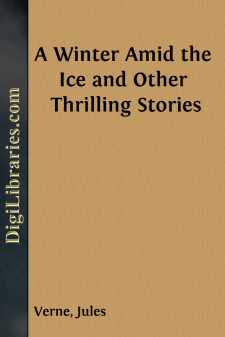Categories
- Antiques & Collectibles 13
- Architecture 36
- Art 48
- Bibles 22
- Biography & Autobiography 813
- Body, Mind & Spirit 142
- Business & Economics 28
- Children's Books 14
- Children's Fiction 11
- Computers 4
- Cooking 94
- Crafts & Hobbies 4
- Drama 346
- Education 46
- Family & Relationships 57
- Fiction 11829
- Games 19
- Gardening 17
- Health & Fitness 34
- History 1377
- House & Home 1
- Humor 147
- Juvenile Fiction 1873
- Juvenile Nonfiction 202
- Language Arts & Disciplines 88
- Law 16
- Literary Collections 686
- Literary Criticism 179
- Mathematics 13
- Medical 41
- Music 40
- Nature 179
- Non-Classifiable 1768
- Performing Arts 7
- Periodicals 1453
- Philosophy 64
- Photography 2
- Poetry 896
- Political Science 203
- Psychology 42
- Reference 154
- Religion 513
- Science 126
- Self-Help 84
- Social Science 81
- Sports & Recreation 34
- Study Aids 3
- Technology & Engineering 59
- Transportation 23
- Travel 463
- True Crime 29
The Adventures of a Special Correspondent
by: Jules Verne
Description:
Excerpt
CHAPTER I.
CLAUDIUS BOMBARNAC,
Special Correspondent,
“Twentieth Century.”
Tiflis, Transcaucasia.
Such is the address of the telegram I found on the 13th of May when I arrived at Tiflis.
This is what the telegram said:
“As the matters in hand will terminate on the 15th instant Claudius Bombarnac will repair to Uzun Ada, a port on the east coast of the Caspian. There he will take the train by the direct Grand Transasiatic between the European frontier and the capital of the Celestial Empire. He will transmit his impressions in the way of news, interviewing remarkable people on the road, and report the most trivial incidents by letter or telegram as necessity dictates. The Twentieth Century trusts to the zeal, intelligence, activity and tact of its correspondent, who can draw on its bankers to any extent he may deem necessary.”
It was the very morning I had arrived at Tiflis with the intention of spending three weeks there in a visit to the Georgian provinces for the benefit of my newspaper, and also, I hoped, for that of its readers.
Here was the unexpected, indeed; the uncertainty of a special correspondent’s life.
At this time the Russian railways had been connected with the line between Poti, Tiflis and Baku. After a long and increasing run through the Southern Russian provinces I had crossed the Caucasus, and imagined I was to have a little rest in the capital of Transcaucasia. And here was the imperious administration of the Twentieth Century giving me only half a day’s halt in this town! I had hardly arrived before I was obliged to be off again without unstrapping my portmanteau! But what would you have? We must bow to the exigencies of special correspondence and the modern interview!
But all the same I had been carefully studying this Transcaucasian district, and was well provided with geographic and ethnologic memoranda. Perhaps it may be as well for you to know that the fur cap, in the shape of a turban, which forms the headgear of the mountaineers and cossacks is called a “papakha,” that the overcoat gathered in at the waist, over which the cartridge belt is hung, is called a “tcherkeska” by some and “bechmet” by others! Be prepared to assert that the Georgians and Armenians wear a sugar-loaf hat, that the merchants wear a “touloupa,” a sort of sheepskin cape, that the Kurd and Parsee still wear the “bourka,” a cloak in a material something like plush which is always waterproofed.
And of the headgear of the Georgian ladies, the “tassakravi,” composed of a light ribbon, a woolen veil, or piece of muslin round such lovely faces; and their gowns of startling colors, with the wide open sleeves, their under skirts fitted to the figure, their winter cloak of velvet, trimmed with fur and silver gimp, their summer mantle of white cotton, the “tchadre,” which they tie tight on the neck—all those fashions in fact so carefully entered in my notebook, what shall I say of them...?












